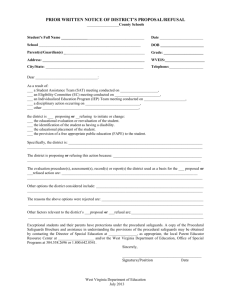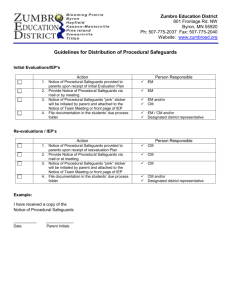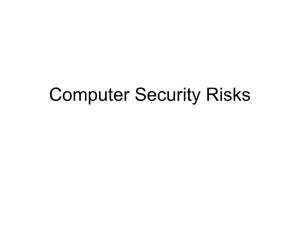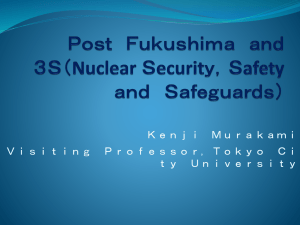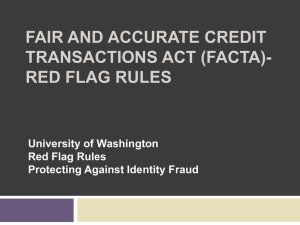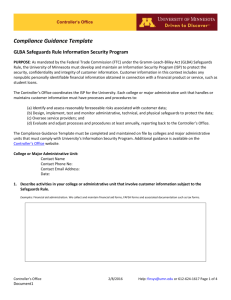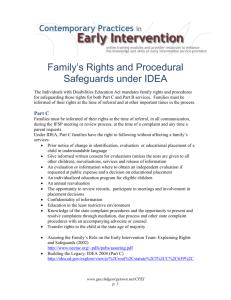osha machine guarding checklist
advertisement
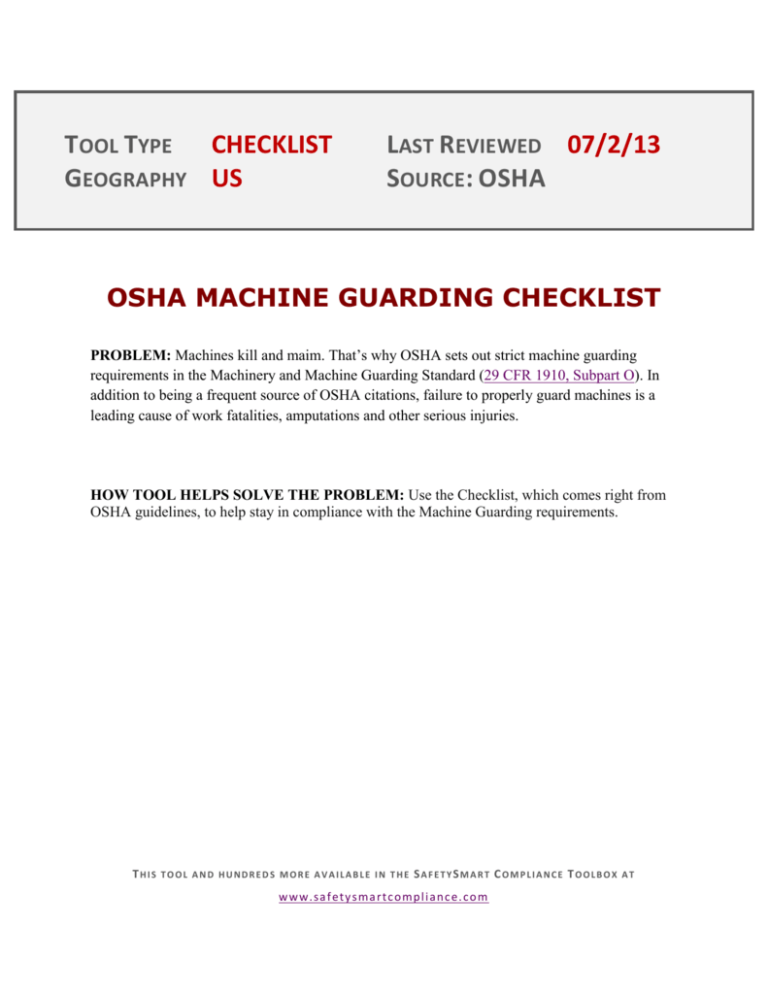
TOOL TYPE CHECKLIST GEOGRAPHY US LAST REVIEWED 07/2/13 SOURCE: OSHA OSHA MACHINE GUARDING CHECKLIST PROBLEM: Machines kill and maim. That’s why OSHA sets out strict machine guarding requirements in the Machinery and Machine Guarding Standard (29 CFR 1910, Subpart O). In addition to being a frequent source of OSHA citations, failure to properly guard machines is a leading cause of work fatalities, amputations and other serious injuries. HOW TOOL HELPS SOLVE THE PROBLEM: Use the Checklist, which comes right from OSHA guidelines, to help stay in compliance with the Machine Guarding requirements. THIS TOOL AND HUNDREDS MORE AVAILABLE IN THE SAFETYSMART COMPLIANCE TOOLBOX AT w w w. sa f ety s ma rtc o mp l i an c e. co m OSHA MACHINE GUARDING CHECKLIST Instructions: Answer the following questions to determine the safeguarding needs of the workplace by drawing attention to hazards that require correction. Requirements for all Safeguards 1. 2. 3. 4. 5. 6. 7. 8. Do the safeguards provided meet the minimum OSHA requirements? Do the safeguards prevent workers' hands, arms, and other body parts for making contact with dangerous moving parts? Are the safeguards firmly secured and not easily removable? Do the safeguards ensure that no object will fall into the moving parts? Do the safeguards permit safe, comfortable, and relatively easy operation of the machine? Can the machine be oiled without removing the safeguard? Is there a system for shutting down the machinery before safeguards are removed? Can the existing safeguards be improved? MECHANICAL HAZARDS Yes No ____ ____ ____ ____ ____ ____ ____ ____ ____ ____ ____ ____ ____ ____ ____ ____ The point of operation: 1. 2. 3. 4. 5. Is there a point-of-operation safeguard provided for the machine? Does it keep the operator's hands, fingers, body out of the danger area? Is there evidence that the safeguards have been tampered with or removed? Could you suggest a more practical, effective safeguard? Could changes be made on the machine to eliminate the point-ofoperation hazard entirely? Power transmission apparatus: 1. 2. 3. 4. 5. Are there any unguarded gears, sprockets, pulleys, or flywheels on the apparatus? Are there any exposed belts or chain drives? Are there any exposed set screws, key ways, collars, etc.? Are starting and stopping controls within easy reach of the operator? If there is more than one operator, are separate controls provided? Other moving parts: 1. Are safeguards provided for all hazardous moving parts of the ____ ____ ____ ____ ____ ____ ____ ____ ____ ____ ____ ____ ____ ____ ____ ____ ____ ____ ____ ____ THIS TOOL AND HUNDREDS MORE AVAILABLE IN THE SAFETYSMART COMPLIANCE TOOLBOX AT w w w. sa f ety s ma rtc o mp l i an c e. co m machine including auxiliary parts? NONMECHANICAL HAZARDS 1. 2. Have appropriate measures been taken to safeguard workers against noise hazards? Have special guards, enclosures, or personal protective equipment been provided, where necessary, to protect workers from exposure to harmful substances used in machine operation? ____ ____ ____ ____ Electric Hazards 1. 2. 3. 4. 5. Is the machine installed in accordance with National Fire Protection Association and National Electrical requirements? Are there loose conduit fittings? Is the machine properly grounded? Is the power supply correctly fused and protected? Do workers occasionally receive minor shocks while operating any of the machines? TRAINING 1. 2. 3. 4. Do operators and maintenance workers have the necessary training in how to use the safeguards and why? Have operators and maintenance workers been trained in where the safeguards are located, how they provide protection, and what hazards they protect against? Have operators and maintenance workers been trained in how and under what circumstances guards can be removed? Have workers been trained in the procedures to follow if they notice guards that are damaged, missing, or inadequate? ____ ____ ____ ____ ____ ____ ____ ____ ____ ____ ____ ____ ____ ____ ____ ____ Protective Equipment and Proper Clothing 1. 2. 3. Is protective equipment required? If protective equipment is required, is it appropriate for the job, in good condition, kept clean and sanitary, and stored carefully when not in use? Is the operator dressed safely for the job (i.e., no loose-fitting clothing or jewelry)? Machinery Maintenance and Repair 1. 2. 3. 4. Have maintenance workers received up-to-date instruction on the machines they service? Do maintenance workers lock out the machine from its power sources before beginning repairs? Where several maintenance persons work on the same machine, are multiple lockout devices used? Do maintenance persons use appropriate and safe equipment in ____ ____ ____ ____ ____ ____ ____ ____ ____ ____ THIS TOOL AND HUNDREDS MORE AVAILABLE IN THE SAFETYSMART COMPLIANCE TOOLBOX AT w w w. sa f ety s ma rtc o mp l i an c e. co m 5. 6. their repair work? Is the maintenance equipment itself properly guarded? Are maintenance and servicing workers trained in the requirements of 29 CFR 1910.147, lockout/tagout hazard, and do the procedures for lockout/tagout exist before they attempt their tasks? ____ ____ ____ ____ ____ ____ ____ ____ ____ ____ ____ ____ THIS TOOL AND HUNDREDS MORE AVAILABLE IN THE SAFETYSMART COMPLIANCE TOOLBOX AT w w w. sa f ety s ma rtc o mp l i an c e. co m

